Zeiss Otus 28mm f1.4 review
-
-
Written by Thomas
Quality
Longitudinal Chromatic Aberration and focus shift
With lenses offering an aperture of f2.8 or larger I test for longitudinal CA (loCA, a.k.a. “axial color” or “bokeh CA”). The new Zeiss Otus shows some magenta coloration in the foreground (left) and greenish hues in the background (right). The coloration is a bit stronger than from the very good Sigma 24/1.4 Art which is a bit disappointing coming from a lens designated “apochromatic”. The effect also shows up in real-life shots but is still pretty moderate. By f4.0 the effect is gone. The test revealed no relevant focus shift.
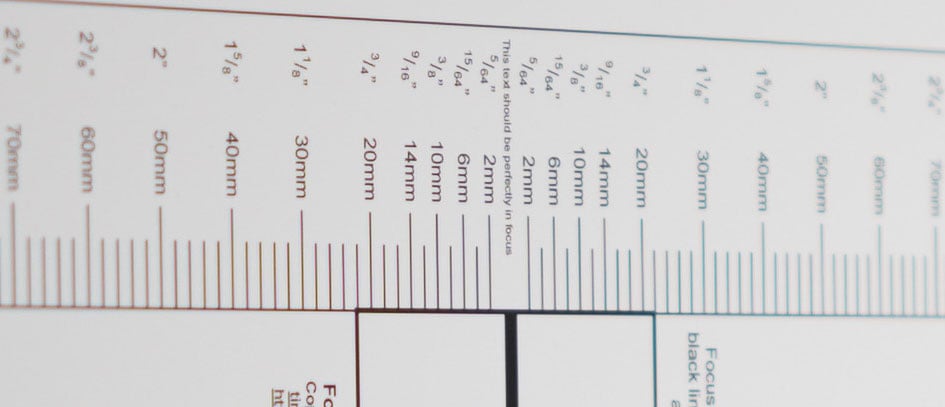
Above: Zeiss Otus 28/1.4 Longitudinal Chromatic Aberration (loCA) at f1.4. 100% crop, left = foreground, right = background
Sharpness and contrast
Let’s have a look at the theoretical performance of the Zeiss Otus first compared to the performance of the Sigma 24mm f1.4 Art:
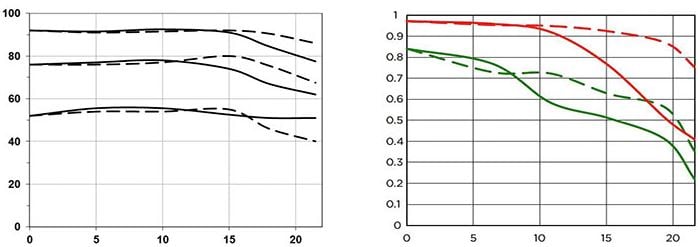
Above left: Zeiss Otus 28/1.4 MTF at f1.4, right: Sigma 24/1.4 Art MTF at f1.4
These charts show the lens-performance at the largest aperture. Higher values are better and the closer the dotted and the continuous lines of each color are together the less astigmatism (= resolution depends on the orientation of the test-pattern) the lens has. The x-axis displays the distance from the optical axis (=center of the sensor) in mm. I’ll show you the real-life performance at 4 mm (center), 13 mm (APS-C/DX-corner), and 20 mm (FF/FX-corner) on a D810.
The MTF-chart of the Zeiss Otus displays the contrast-curve at 10, 20 and 40 lp/mm (from top to bottom), which is a bit unusual. Other manufacturers like Nikon on the right display the contrast-curves at 10 lp/mm (in red) and 30 lp/mm (in blue).
From the charts you can easily see that both lenses should perform quite differently: The Zeiss Otus is optimized for a very even performance across the full-frame sensor while the Sigma Art has a very high performance in the center but drops in sharpness from 7mm off-center outwards and clearly trails the Otus outside the APS-C/DX image-circle. There is also a higher spread between sagittal and meridional performance with the Sigma beyond 10mm indicating higher astigmatism of the Sigma than the Zeiss – at least on paper. But let’s see how this theoretical performance translates into real life results in the sharpness test based on Siemens-stars.
What follows are near-center results (first column) followed by APS-C/DX-corner results and FF/FX-corner results on a D810. Processing was done in Lightroom 6.3 from RAW at Camera Standard settings. Noise-reduction is set to 0, sharpening to 35/0.5/36/10, with no extra tone, color, or saturation-adjustment. White-balance was adjusted to a neutral white and I did some exposure compensation to make the brightness match. CA-removal is ON.
The following are all 100% crops!
Zeiss Otus 28/1.4 on Nikon D810; 100% crop from center, APS-C/DX-corner, FF/FX-corner

Above: 28mm, f1.4

Above: 28mm, f2.0

Above: 28mm, f2.8

Above: 28mm, f4.0

Above: 28mm, f5.6

Above: 28mm, f8.0

Above: 28mm, f11
These 100% crops directly from a 36MP D810 sensor show a stunning performance of this lens already at f1.4. And I did not need to optimize focus separately for each crop because the Otus shows no discernible field-curvature. There’s also no coma to speak of. Stopping down to f2.8 brings the contrast and sharpness in the FF/FX-corner to an excellent level and the lens does not show any further improvements up to f5.6 where it is so sharp that you can see minimal effects of diffraction setting in already at f8. Normally you don’t notice diffraction on a D810 from f11 onwards.
Following is a direct comparison of the Zeiss Otus (1st row) to the Nikon AF-S 24mm f1.4 (2nd row) and the Sigma 24mm f1.4 Art (last row) at f1.4:

Above: Zeiss Otus 28/1.4 at 28mm, f1.4

Above: Nikon 24/1.4G at 24mm, f1.4

Above: Sigma 24/1.4 Art at 24mm, f1.4
So while on paper the Sigma produces the sharpest center image in these test-shots the Otus has an advantage in the center over the Sigma the tell-tale sign being the stronger moire and aliasing artifacts that the Otus provokes on the D810. Looking in the APS-C/DX corner and the FF/FX-corner both lenses from Nikon and Sigma are no match for the Zeiss. Both the Sigma and the Nikon also exhibit slight field-curvature.
And another comparison with the Zeiss 28/2.0 Distagon, the Nikon 28/1.8G ED (shot on a Nikon D800 and sharpened to 70/0.5/36/10 to compensate for the AA-filter), and the Sigma 24-35/2.0 Art at 28mm f2.0:

Above: Zeiss Otus 28/1.4 on Nikon D810 at 28mm, f2.0

Above: Zeiss 28/2.0 Distagon on Nikon D810 at 28mm, f2.0

Above: Nikon 28/1.8G on Nikon D800 at 28mm, f2.0

Above: Sigma 24-35/2.0 Art on Nikon D810 at 28mm, f2.0
Again, the Otus clearly outperforms the competition.
Performance at large distances
The Siemens-star test-targets are shot at a distance of 40x focal length. But performance of lenses also depends on the shooting distance. Therefore I do another series of test-shots of a landscape dubbed the “Unremarkables” where you can measure distances in km, not meter. I use this scene to show you how the lenses perform when almost everything is at infinity. I set White Balance to a standard daylight value to make them comparable across lenses shot at the same day and also try to make exposure comparable. There’s no tinkering with vignette-control so you see it here as it is produced by the lens. Focus was manually acquired at the largest aperture in live-view and not changed for other apertures.
You can click on the image to access the large original. Please respect our copyright and only use those images for personal use.
The main image shows the complete scene at maximum aperture to give you an impression of the angle of view and to judge vignetting. This is followed by one row of 100% crops from f1.4 to f8 each from the middle, the APS-C/DX-corner and the right FF/FX-corner. The atmosphere was a bit hazy on that morning so I took the crops from buildings a little closer than I normally would.
You can access the respective shots up to f16 via the links beneath the main image.
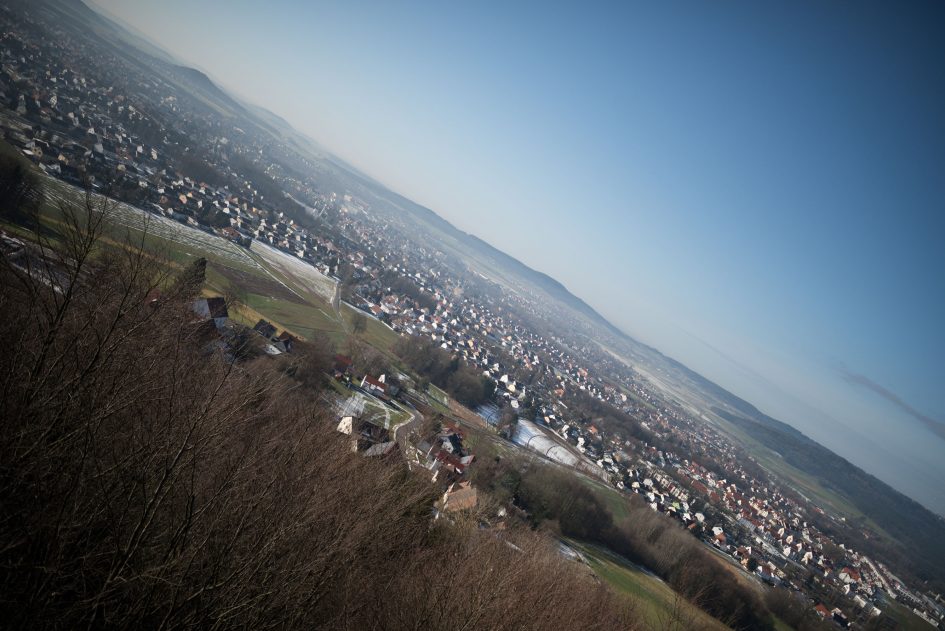
Above: Zeiss Otus 28/1.4 at f1.4; also available at f2.0, f2.8, f4.0, f5.6, f8.0, f11, f16

Above: Zeiss Otus 28/1.4 at f1.4; 100% crop from center, APS-C/DX-corner, FF/FX-corner

Above: Zeiss Otus 28/1.4 at f2.0; 100% crop from center, APS-C/DX-corner, FF/FX-corner

Above: Zeiss Otus 28/1.4 at f2.8; 100% crop from center, APS-C/DX-corner, FF/FX-corner

Above: Zeiss Otus 28/1.4 at f4.0; 100% crop from center, APS-C/DX-corner, FF/FX-corner

Above: Zeiss Otus 28/1.4 at f5.6; 100% crop from center, APS-C/DX-corner, FF/FX-corner

Above: Zeiss Otus 28/1.4 at f8.0; 100% crop from center, APS-C/DX-corner, FF/FX-corner
Performance is very good even wide open across the full-frame sensor. There’s a little light bleeding from very bright areas which is practically gone at f2.0. Stop down to f2.8 to get excellent clarity and sharpness across the sensor and very low vignetting.
Following is a comparison with the Nikon 24/1.4G and the Sigma 24/1.4 Art shot at a different day, so the light and atmospheric conditions were different. But you can still compare performance quite well:

Above: Zeiss Otus 28/1.4 at f1.4; 100% crop from center, APS-C/DX-corner, FF/FX-corner

Above: Nikon 24/1.4G at f1.4; 100% crop from center, APS-C/DX-corner, FF/FX-corner

Above: Sigma 24/1.4 Art at f1.4; 100% crop from center, APS-C/DX-corner, FF/FX-corner
While the Nikon generally looks softer than the Otus at f1.4 across the full-frame sensor, the Sigma has a slight advantage in the center. But from the APS-C/DX-corner onwards the Otus wins.
Another comparison with the Zeiss 28/2.0 Distagon shot a few minutes apart and the Sigma 24-35/2.0 Art shot another day at 28mm f2.0:

Above: Zeiss Otus 28/1.4 at f2.0; 100% crop from center, APS-C/DX-corner, FF/FX-corner

Above: Zeiss 28/2.0 Distagon at f2.0; 100% crop from center, APS-C/DX-corner, FF/FX-corner

Above: Sigma 24-35/2.0 Art at f2.0; 100% crop from center, APS-C/DX-corner, FF/FX-corner
The Zeiss 28/2.0 Distagon looks pretty sharp too within the APS-C/DX image-circle but neither overall contrast nor FF/FX-corner performance wide-open can match the Otus. The Sigma shows (again) that it is one of the best wide-angle zooms out there – if it were not for the dip in performance at the APS-C/DX corner.
Vignetting
To make it easier to compare light fall-off in the corners of a full-frame sensor I’ve arranged a series of three shots each with the Zeiss (1st row), the Nikon 24/1.4G (2nd row), and the Sigma 24/1.4 Art (last row) at different apertures. From left to right: f1.4, f2.0, and f2.8:

Above: Zeiss Otus 28/1.4 at f1.4, f2.0, f2.8

Above: Nikon 24/1.4G at f1.4, f2.0, f2.8

Above: Sigma 24/1.4 Art at f1.4, f2.0, f2.8
As you can see, the differences under controlled conditions are minimal.
Rendering of point-light sources at night-shots
Night-shots pose a different challenge for lenses as the contrast is even higher than under bright sun and point-light sources can reveal some weaknesses such as coma, haloing and color-aberrations that do not show up as prominently in other test-shots. The 100% crops below the main image show the effect of coma in the FX corner of the Zeiss Otus at various apertures. From f2.8 the effect is negligible:
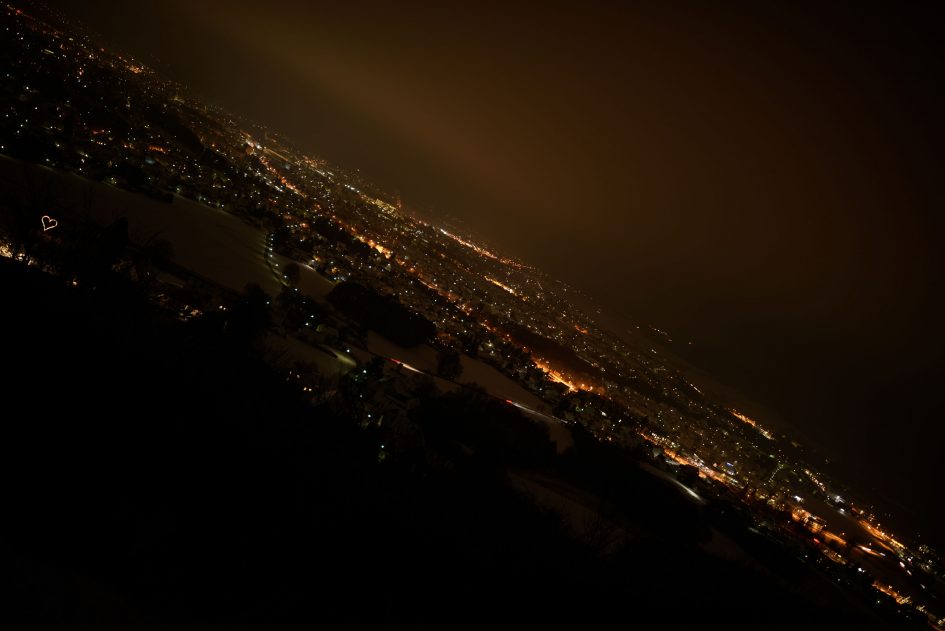
Above: Zeiss Otus 28/1.4 at f1.4; also available at f2.0, f2.8, f4.0, f5.6

Above: Zeiss Otus 28/1.4; 100% crop from FF/FX corner at f1.4, f2.8, f4.0
The following crops show the performance from the Nikon and the Sigma (shot another day):

Above: Nikon 24/1.4G; 100% crop from FF/FX corner at f1.4, f2.8, f4.0

Above: Sigma 24/1.4 Art; 100% crop from FF/FX corner at f1.4, f2.8, f4.0
The differences in coma are very obvious: while the Zeiss has a little coma at f1.4, the coma of the Nikon produces huge birdlike artifacts and should be stopped down to at least f2.8 if you want to avoid those. And the Sigma Art is only a little better than the Nikon.
Rendering of out-of-focus point-light sources
This test is for the rendering of point-light sources in an out-of-focus background. The circle of confusion that is produced by this test is pretty indicative of Bokeh performance (in the background) and light fall-off. Ideally the out-of-focus image of the point-light is evenly lit and perfectly circular, with no “onion-rings”, and without coloration. Large aperture lenses normally produce an effect known as “cat’s eye” the further away from the optical axis the point-light is projected. This is due to optical vignetting in the lens barrel when light enters the lens from an angle.
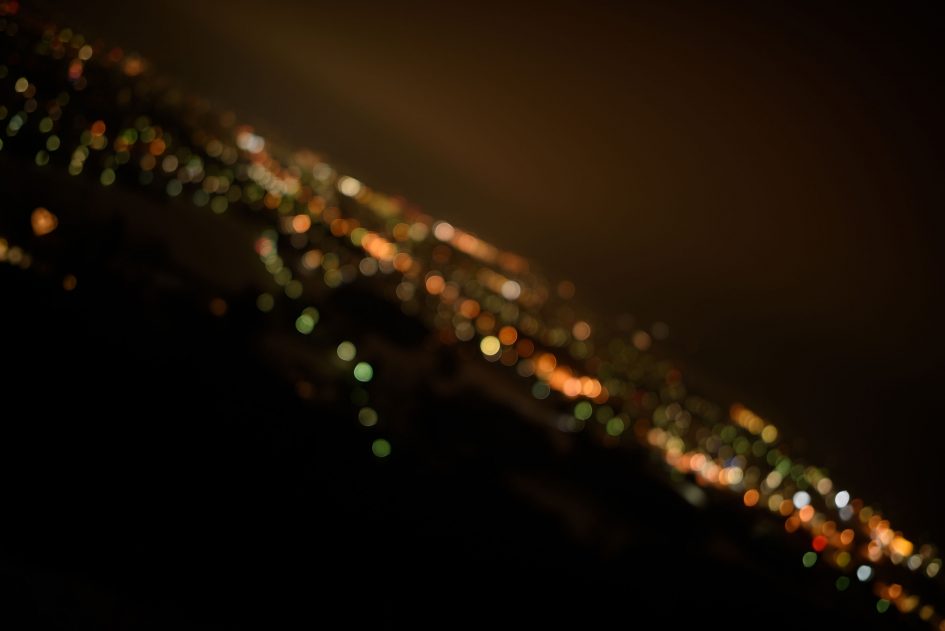
Above: Zeiss Otus 28/1.4 at f1.4; also available at f2.0, f2.8, f4.0, f5.6

Above: Zeiss Otus 28/1.4 at f1.4; 50% crop from center, APS-C/DX-corner, FF/FX-corner
As the 50% crops above show: The Zeiss 28/1.4 Otus produces not the fattest circle of confusion. But that was not to be expected with a 28mm lens. In the center it exhibits almost no onion rings and the light-distribution across the circle is very even with only little outlining. Looking towards the corners outlining or hot-spots do not become a problem but some “Bokeh balls” now show stripes like cut-off onion-rings. The cat’s eye effect is pretty moderate as is clipping from the mirror-box. Let’s see how the Nikon and Sigma compare:

Above: Nikon 24/1.4G; 50% crop from center, APS-C/DX-corner, FF/FX-corner

Above: Sigma 24/1.4 Art; 50% crop from center, APS-C/DX-corner, FF/FX-corner
Both lenses are a bit disadvantaged in this comparison as their shorter focal length should reduce the size of the Bokeh balls by around 15%. Keeping this in mind the Nikon produces only slightly smaller Bokeh balls than the Otus. The Sigma Art has the smallest circles of confusion and it also shows a more intense outlining in the center. The Nikon often produces green outlining from the stronger longitudinal CAs. The further away you look from the center the more pronounced bright “hot-spots” occur – with the Nikon more so than with the Sigma. The Otus is practically free of this effect.
Now let’s see how this analysis of out-of-focus point-light sources translates into Bokeh-performance shooting a book-shelf.
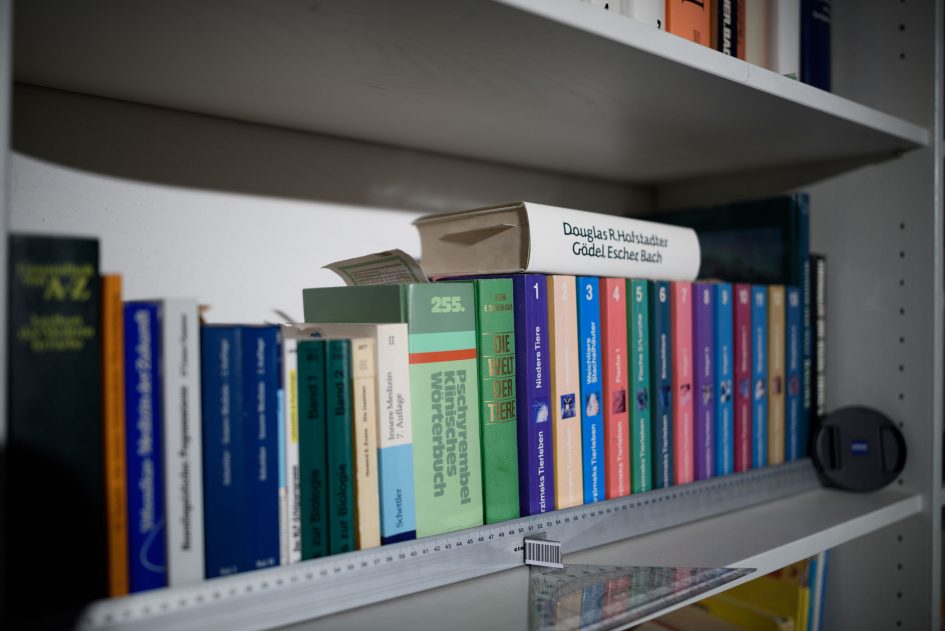
Above: Zeiss Otus 28/1.4 at f1.4; also available at f2.0, f2.8, f4.0, f5.6

Above: Zeiss Otus 28/1.4 at f1.4; 50% crop from foreground, middle-ground, background
The (less important) foreground looks nervous while the middle ground looks nicely blurred and stays clean of color artifact often seen with other large aperture lenses. The background shows some outlining but the white letters of the rightmost book are well smeared. Let’s see how the Nikon and Sigma compare:

Above: Nikon 24/1.4G; 50% crop from foreground, middle-ground, background

Above: Sigma 24/1.4 Art; 50% crop from foreground, middle-ground, background
The foreground is best with the Sigma followed by the Nikon which looks similar to the Zeiss. The middle-ground shows slightly greenish coloration from the Nikon while the Sigma is as color-neutral as the Zeiss – albeit not as nicely blurred as with the Otus. In the background the Sigma looks the harshest with the Nikon only a bit better. The Otus in comparison renders the smoothest background although there’s still room for improvement.
Flare/ghosting
Catching a strong light-source shining directly into the lens is a major risk with wide-angle lenses – even with the lens-hood attached. That could produce strange colorful ghosts-images or reduce contrast considerably through flare and glare. The appearance of flare and ghosting depends on factors like the aperture and the angle of the light hitting the lens. So to judge the proclivity of the Sigma for these artifacts I went through a series of well calculated shots against a strong light source to provoke glare and ghosting.
Especially when stopped down like in the examples below at f8.0 artifacts could easily be seen:
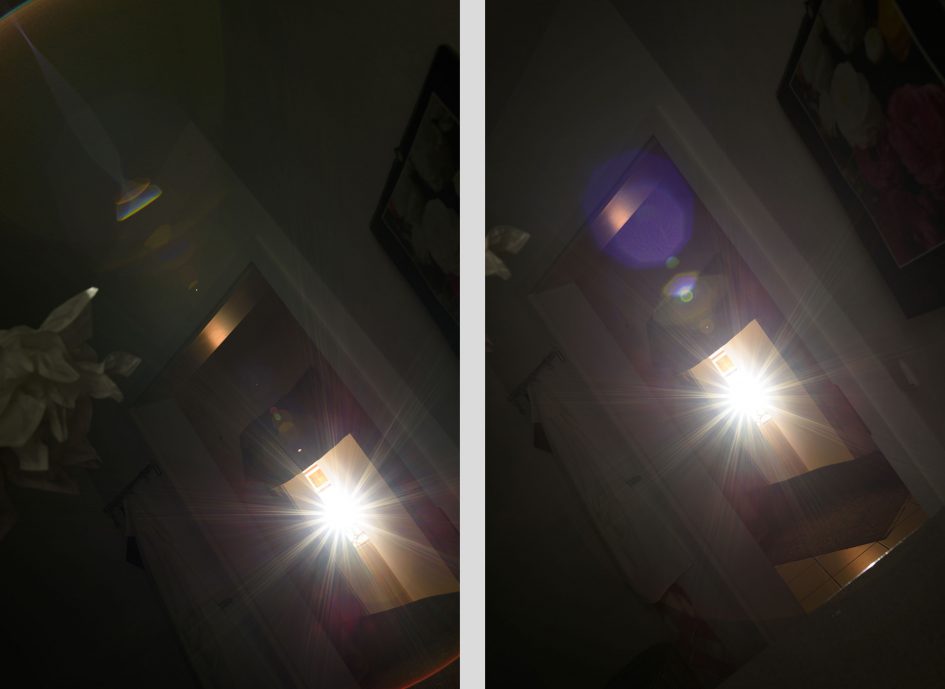
Above: Strong light hitting the Zeiss Otus 28/1.4 at f8.0
Compared to the Sigma 24/1.4 Art (see below) the amount of artifacts is similar although the Sigma’s come in green. You can also see that the Sigma produces much less star-bursts than the Otus:
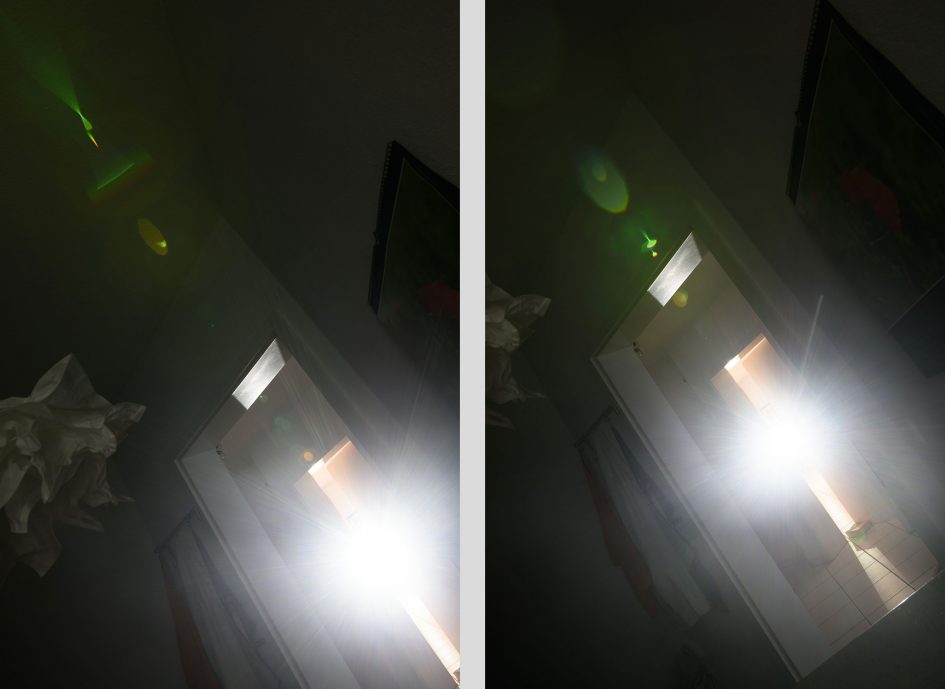
Above: Strong light hitting the Sigma 24/1.4 Art at f8.0
But the Sigma has the clear advantage of being less prone to flare/glare from light-sources outside the frame (not shown here). So with the Otus you have to watch out a bit for strong light-sources outside the frame even with the lens hood attached.




